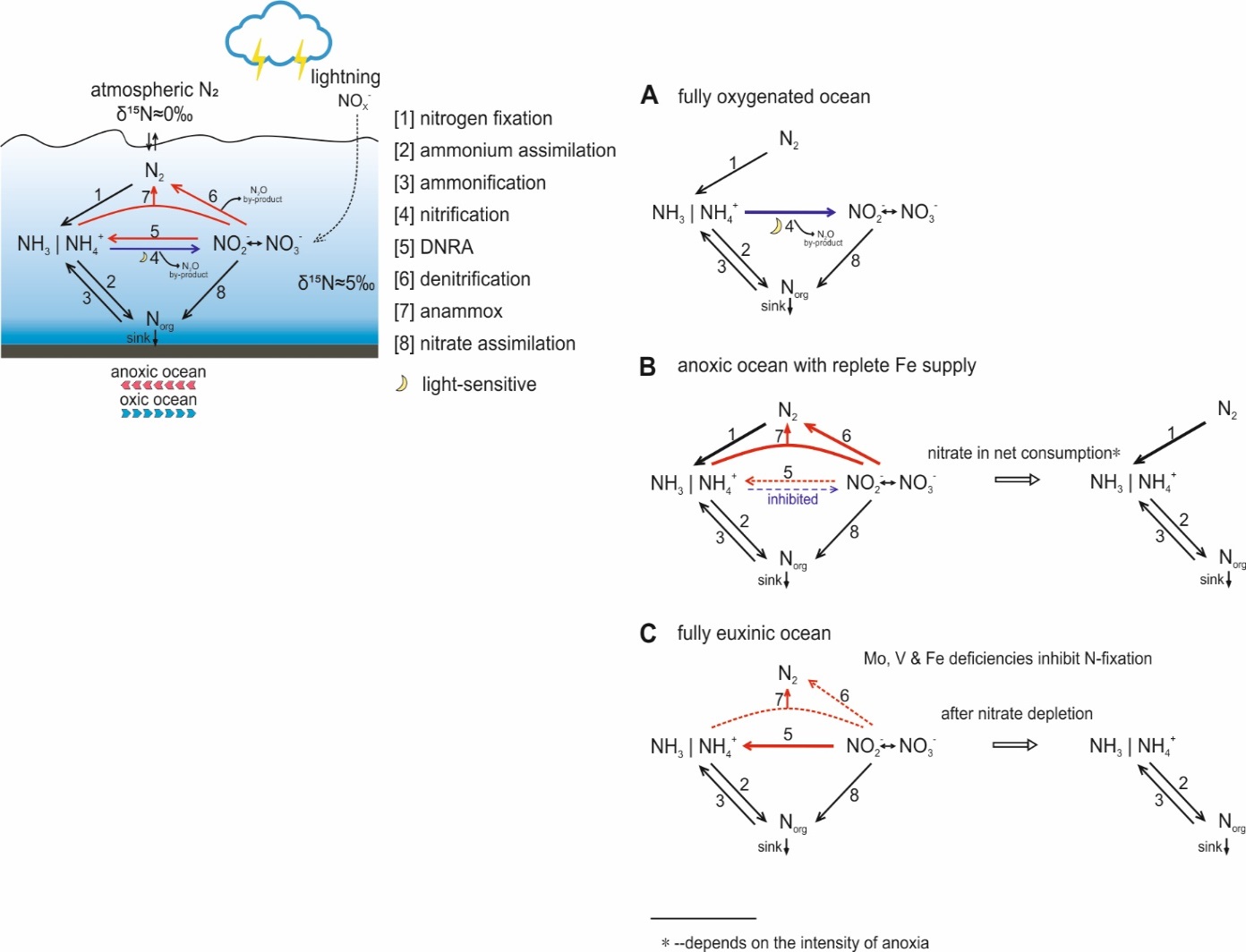NUC: Nutrient Cycles during the Permian-Triassic transition
PI: M. Joachimski and T. Ilyina
Anthropogenic climate warming and ocean deoxygenation are major concerns for the future of Planet Earth. These changes are expected to cause a series of synergetic effects, including major changes in nutrient cycles culminating in a significant decrease in ocean productivity. The Permian-Triassic (P-T) transition witnessed the most catastrophic mass extinction in the Phanerozoic, accompanied by 8 to 10 °C low latitudinal warming and extensive global ocean anoxia, and thus represents a fossil analogue to modern climate change. Primary productivity in aquatic ecosystems and nutrient cycles under extreme environmental stresses in the P-T scenario have not been systematically investigated. The proposed project, for the first time, combines geochemical proxy reconstructions with highly sophisticated Earth system modelling and focuses on the nitrogen, phosphorus and silicon cycles during the latest Permian to Early Triassic hothouse period. The project will provide new insights to intensively debated topics: 1) were P-T oceans P-limited or N-limited and 2) whether the waxing and waning of the ocean’s dissolved silica pool caused the P-T chert gap.



Our Social Media
News